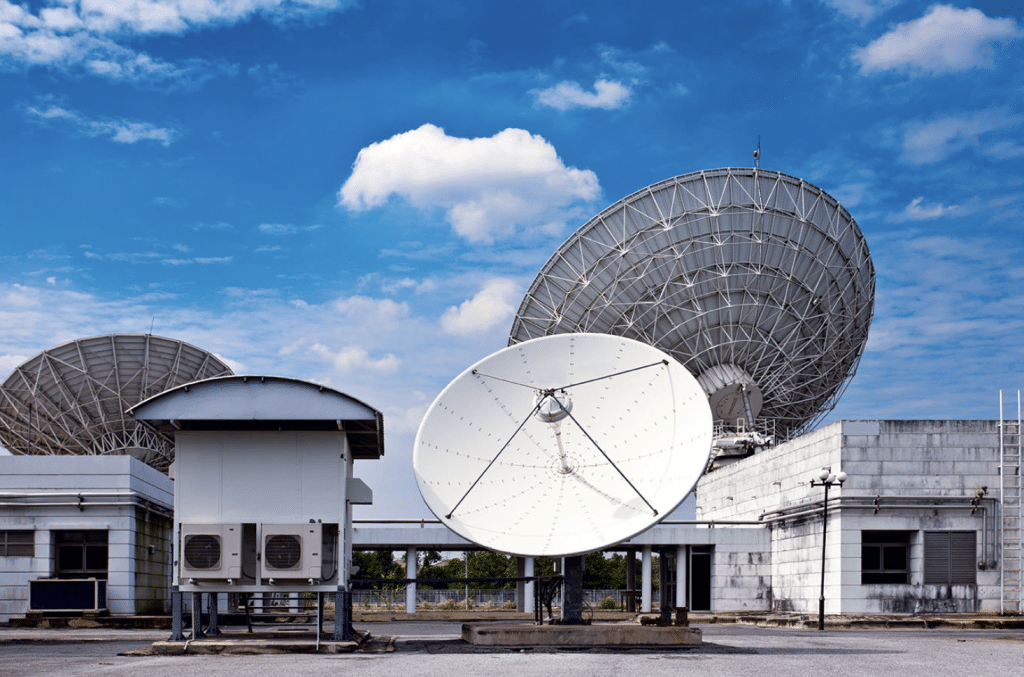Introduction
In a world increasingly dependent on seamless connectivity, reaching remote and underserved areas remains a major challenge. This is where VSAT technology steps in — providing dependable communication links in locations beyond the reach of traditional networks. From maritime operations to humanitarian missions, VSAT (Very Small Aperture Terminal) is transforming how industries stay connected.
What is VSAT?
VSAT refers to a two-way satellite communication system that uses small dish antennas, typically less than 3 meters in diameter, to transmit and receive data. These terminals connect to a central hub via satellite, forming a powerful communication network that operates independently of terrestrial infrastructure.
A typical VSAT setup includes:
- A dish antenna for signal transmission and reception
- A transceiver to manage frequency shifts and power levels
- A modem or router for internet access or private network connectivity
- A hub station connecting to the internet backbone
VSAT operates over different satellite frequency bands like C-band, Ku-band, and Ka-band, each chosen based on geographic coverage, bandwidth needs, and resilience to weather conditions.
Why is VSAT Important?
1. Reliable Connectivity in Remote Areas
VSAT is essential for locations beyond terrestrial network reach — from remote industrial outposts to deep-sea vessels. It ensures continuous communication, enabling operational efficiency and safety in isolated environments.
2. Enabler of Critical Operations
Industries such as maritime, oil & gas, defense, and humanitarian aid depend on stable, real-time connectivity. VSAT powers everything from surveillance feeds and remote diagnostics to voice and data exchange — ensuring teams stay in sync regardless of location.
3. Disaster Recovery and Emergency Backup
In the event of a terrestrial network failure, VSAT serves as a robust backup, allowing organizations to maintain secure, real-time communications during emergencies or natural disasters.
4. Scalable and Customisable
VSAT networks can be tailored to fit a wide range of needs — from lightweight terminals for mobile operations to high-throughput solutions for enterprise hubs. Bandwidth can be scaled on demand, making it a cost-efficient solution for dynamic operations.
5. Global Reach
Modern VSAT solutions, supported by GEO and LEO satellite constellations, offer near-global coverage. This includes advanced services like Starlink, which has revolutionized the market by delivering low-latency, high-speed broadband in even the most remote regions.
VSAT in Action: Key Applications
- Maritime: Ships and yachts benefit from high-speed internet access for navigation, crew welfare, and real-time data exchange.
➤ IEC Telecom’s Starlink Maritime Portfolio provides tailored VSAT-based solutions for sea-based operations, ensuring reliable broadband even in the middle of the ocean. - Land-Based Operations: From emergency camps to remote construction sites, VSAT supports data, voice, and video applications.
➤ Explore the Starlink Land Portfolio designed for land-based connectivity, perfect for humanitarian missions, mining operations, and more. - Oil & Gas: VSAT enables constant communication between offshore rigs and onshore command centers.
- Government & NGOs: Secure, encrypted channels support critical communications in crisis zones.
- Retail & Finance: Remote ATMs and retail branches utilize VSAT for secure transaction processing.
IEC Telecom’s Expertise in VSAT Solutions
The authorised satellite provider such as IEC Telecom offers next-generation VSAT systems powered by both traditional satellite constellations and emerging players like Starlink.
Conclusion
As digital transformation extends to every corner of the globe, VSAT remains a core enabler of global connectivity. From ensuring crew safety at sea to powering communications in conflict zones, its role is indispensable. And with evolving technologies like Starlink, the possibilities for high-speed, low-latency satellite internet are expanding faster than ever.
Stay connected. Stay operational. Anywhere in the world — with VSAT.
